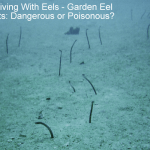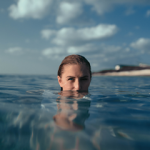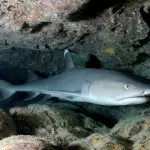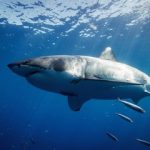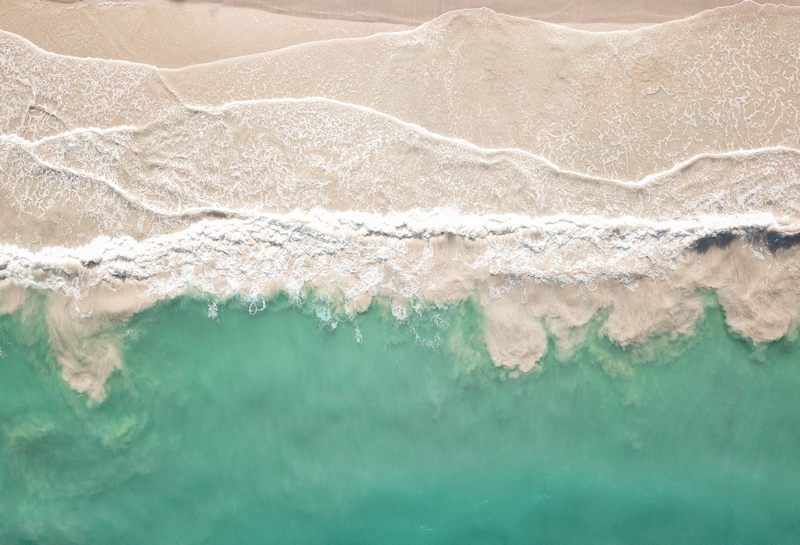
Have you ever wondered what sand is made from? But an even more bizarre question that many ask; is sand fish poop?
Sand found in the tropics is estimated to contain up to 85% fish poop from parrotfish. Parrotfish eat coral by scrapping it away and inevitably bite off much of the limestone coral skeleton too, as they eat the living coral. It is this limestone that passes through their gut and pooped out as sand.
The best way to do more diving is to book yourself on a scuba diving liveaboard. You can check the latest and best deals on liveaboards using the following window:
What animals poop sand?
Parrotfish poop sand, which is as a result of the rock and coral they swallow when the chew the coral reefs to eat the thin layer of soft coral and algae.
On one reef alone, parrotfish can produce tons of fine white sand every year, and it is this soft white sand that forms a large element of tropical beaches.
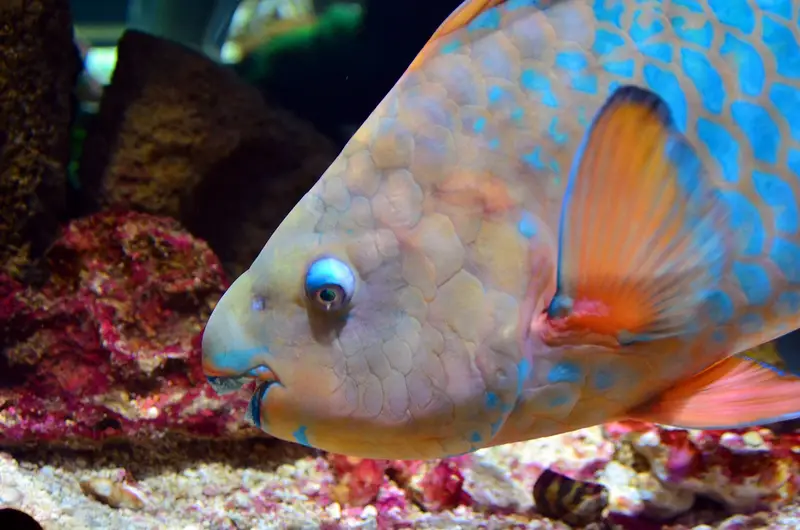
How much sand do parrotfish poop?
Large parrotfish are capable of producing up to 450kg (1,000 pounds)* of sand each year, which is the weight of an adult male moose, a 6-person hot tub or 4 full-size refrigerators.
These large parrotfish swim in large shoals, and combined will be responsible for producing tons of sand every year.
* The 450kg (1,000lb) of sand is as per the Smithsonian Institution and Museum.
Parrot fish poop sand video
Parrotfish poop sand video is demonstrated in the following BBC Earth video.
How much of sand is fish poop?
It is estimated that up to 85% of white coral-based sand in the tropics is made up of parrotfish poop.
Is all sand fish poop?
Not all sand contains fish poop, as sand is made up from rock particles created by erosion.
Sand on beaches is made up from the nearby rocks that are eroded by wave and tidal action, which is why sand can be many different colours, as the colour reflects the types of rock in the area (see below for sand colours found).

Is sand in Florida fish poop?
The sand in certain parts of Florida will contain parrotfish poop, as the coral reefs off Florida’s coast have parrot fish living and feeding on the corals and algae.
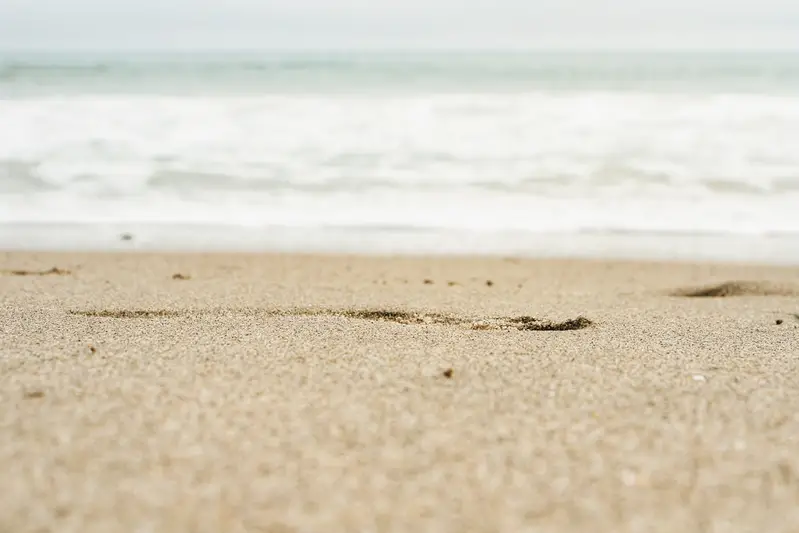
Where does sand come from and what is it made of?
Sand is mostly made up of fine particles of rock, which have been eroded away from larger rocks in the oceans. The colour of the sand on a beach and on the sea bed is determined by what kind of rocks the sand came from.
The following types of sand can be found on beaches around the world:
- Bright white sand. Bright white sand in places like the Maldives, the north east coast of Australia along the Great Barrier Reef and on many of the islands in the Caribbean is what is found on beaches and the sea bed near extensive coral reefs, which is the source of the sand in this case. White sand contains fish poop from parrotfish, as these fish contribute to the break-down of the coral rock too. The whitest sandy beach in the world is Hyams Beach in New South Wales, Australia, which is so white you need sunglasses to look at it.
- Black sand. Dark or black sand in places like Hawaii, on some of the Caribbean Islands and on some beaches in the Canary Islands can be found near volcanic basaltic rock. It is this black volcanic rock, which is also known as igneous rock, that gives the sand in places like Hawaii its dark colour.
- Yellow sand. Yellow sand which is found on beaches in Europe and the UK is made up of quartz crystals, which contains traces of iron, which is what gives it the yellow colour.
- Green sand. Green sand can be found in Hawaii on Papakolea Beach, also known as Green Sand Beach or Mahana Beach on the Island of Hawaii. Green sand can also been found on beaches in Guam and the Galapagos Islands too. It is the mineral olivine that gives this sand its green colour.
- Red sand. Red sand can be found on the island of Maui, Hawaii and the red colour is as a result of excess iron in the sand. Prince Edward Island in Canada also has red sandy beaches too, which is also due to a high content of iron.
- Purple sand. Purple sand can be found on Pfeiffer Beach in Big Sur, California, and the purple colour is caused by manganese garnet, which can be found locally.
- Pink sand. The stunning pink beach can be found in the Bahamas. The pink colour of the sand is caused by a red coloured coral insects, known as Foraminifera.
- Rainbow colours. Rainbow Beach in Fraser Island in Australia has over 70 colours of sand, which is made up from the mixture of minerals in the region.
- Brown sand. Brown or tan colour sand beaches, which can be found on Rockaway Beach in Pacifica south of San Francisco, which is an almost chocolate brown colour. The brown coloured sand is from the erosion of bluish-grey limestone which combines with volcanic greenstone found in this region.
- Orange sand. Bright orange sand can be found on Ramla Bay Beach in Malta on the island of Gozo. Porto Ferro in Sardinia, Italy also has orange sand, which is due to the the area’s native orange limestone.
Is brown sand fish poop?
Brown sand is not fish poop, but instead gets its brown colour from the surrounding rocks that get eroded, which in the case of Rockaway Beach is California is from the erosion of bluish-grey limestone which combines with volcanic greenstone found in this region.
How is sand formed on beaches?
The sand on beaches is formed from the erosion of nearby rocks and is deposited on the beach as a result of wave and tidal action. The fish poop from parrotfish is also deposited on the beaches in the tropics and makes up a large percentage of white Sandy beaches.
I hope you enjoyed this page about what is sand made of and is sand fish poop?
If you have more questions either about snorkelling or scuba diving (or specifically about what is sand made of and is sand fish poop), please comment below with your questions.
Please share your experiences, plus dive sites, resorts and liveaboards you recommend. Share the time of year of your trip together with what you saw, the visibility, currents and dive operator, as this will help others who read this page.
There will also be many more pages and articles about scuba and scuba diving safety tips (and on snorkelling too) for you to read and learn about this fabulous sport.
Have fun and be safe!

